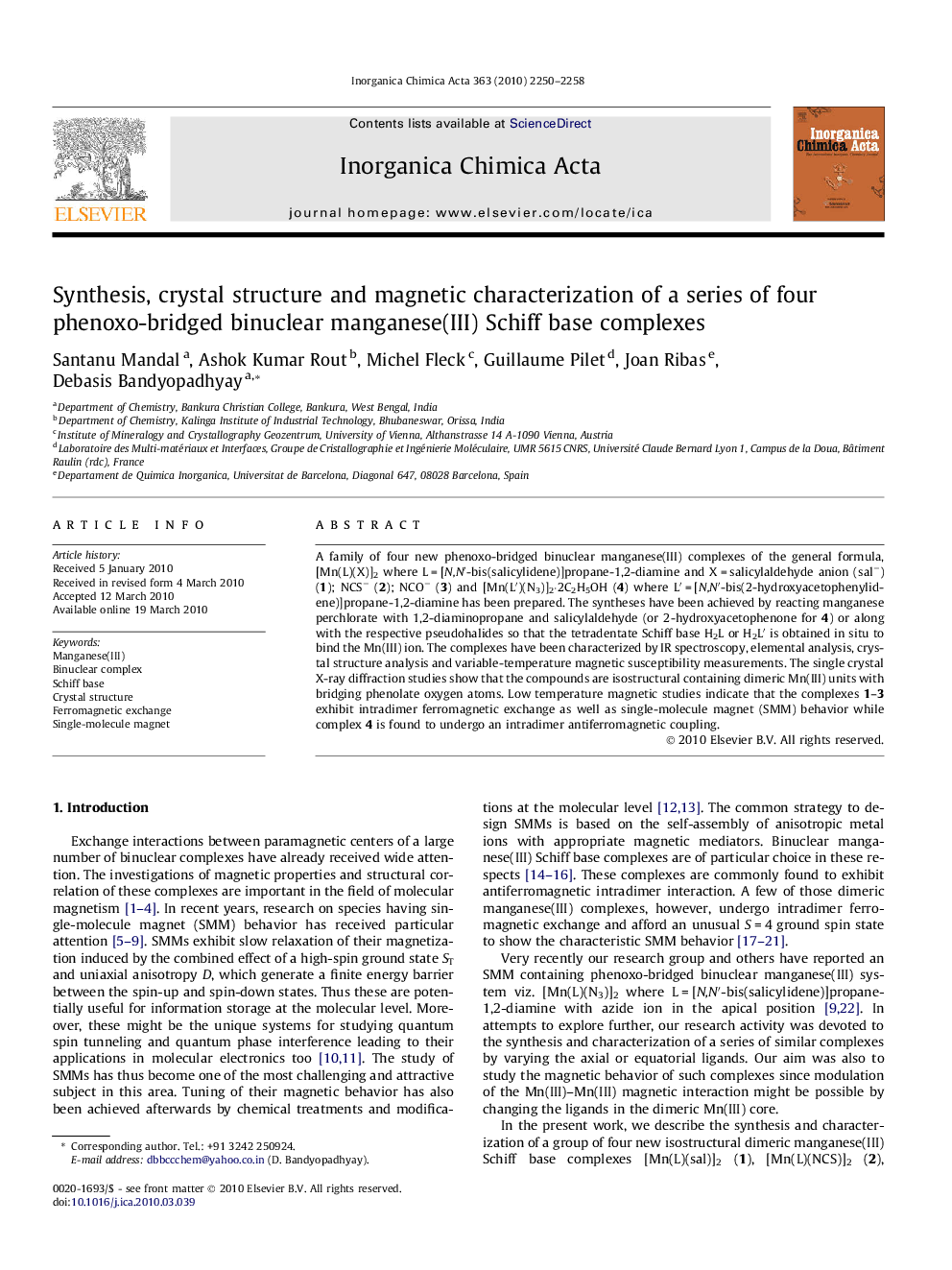| Article ID | Journal | Published Year | Pages | File Type |
|---|---|---|---|---|
| 1312577 | Inorganica Chimica Acta | 2010 | 9 Pages |
A family of four new phenoxo-bridged binuclear manganese(III) complexes of the general formula, [Mn(L)(X)]2 where L = [N,N′-bis(salicylidene)]propane-1,2-diamine and X = salicylaldehyde anion (sal−) (1); NCS− (2); NCO− (3) and [Mn(L′)(N3)]2·2C2H5OH (4) where L′ = [N,N′-bis(2-hydroxyacetophenylidene)]propane-1,2-diamine has been prepared. The syntheses have been achieved by reacting manganese perchlorate with 1,2-diaminopropane and salicylaldehyde (or 2-hydroxyacetophenone for 4) or along with the respective pseudohalides so that the tetradentate Schiff base H2L or H2L′ is obtained in situ to bind the Mn(III) ion. The complexes have been characterized by IR spectroscopy, elemental analysis, crystal structure analysis and variable-temperature magnetic susceptibility measurements. The single crystal X-ray diffraction studies show that the compounds are isostructural containing dimeric Mn(III) units with bridging phenolate oxygen atoms. Low temperature magnetic studies indicate that the complexes 1–3 exhibit intradimer ferromagnetic exchange as well as single-molecule magnet (SMM) behavior while complex 4 is found to undergo an intradimer antiferromagnetic coupling.
Graphical abstractFour phenoxo-bridged binuclear manganese(III) Schiff base complexes, [Mn(L)(X)]2 where L = [N,N′-bis(salicylidene)]propane-1,2-diamine, X = salicylaldehyde anion (1), NCS− (2), NCO− (3) and [Mn(L′)(N3)]2·2C2H5OH (4) where L′ = [N,N′-bis(2-hydroxyacetophenylidene)]propane-1,2-diamine have been synthesized and characterized by X-ray structural and low temperature magnetic studies. Complexes 1–3 exhibit intradimer ferromagnetic exchange and single-molecule magnet behavior while complex 4 undergoes antiferromagnetic coupling.Figure optionsDownload full-size imageDownload as PowerPoint slide
